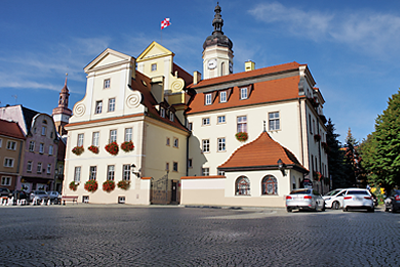Nazwa miasta wywodzi się od polskiej nazwy "Wół" i wiązana jest z miejscem wołów – „miasto z wołami”. Ziemia wołowska około 990 roku została włączona przez Mieszka I, wraz z całym Śląskiem, w granice państwa Piastów. A około 1285 roku jeden z Piastów głogowskich, Przemko Ścinawski, lokował Wołów. To dało potężny impuls do rozwoju.
Miejscowość wymieniona została w staropolskich, zlatynizowanych formach Wolovo oraz Wolowo w łacińskim dokumencie wydanym w 1202 roku wydanym we Wrocławiu przez kancelarię biskupa wrocławskiego Cypriana. Miejscowość rozwijała się od XII wieku wokół zamku Piastów, którzy właśnie tutaj ulokowali jedną ze swoich siedzib. Wołów uzyskał prawa miejskie w 1285 roku.
Położone na południowo-zachodnich stokach Wzgórz Trzebnickich (zwane Kocimi Górami - Katzengebirge), stanowiącymi środkową część Wału Trzebnickiego, łagodnie opadającymi na południe i zachód w pradolinę Odry, a na północy w pradolinę Baryczy.
Wizytówką Wołowa są mury obronne ze stylizowanymi, kamiennymi wołami. Oprócz murów wartymi zobaczenia zabytkami są m.in. zamek piastowski z pierwszej połowy XIV w., kościoły Wawrzyńca i Boromeusza, urokliwa starówka oraz rynek z ratuszem z połowy XV wieku.


